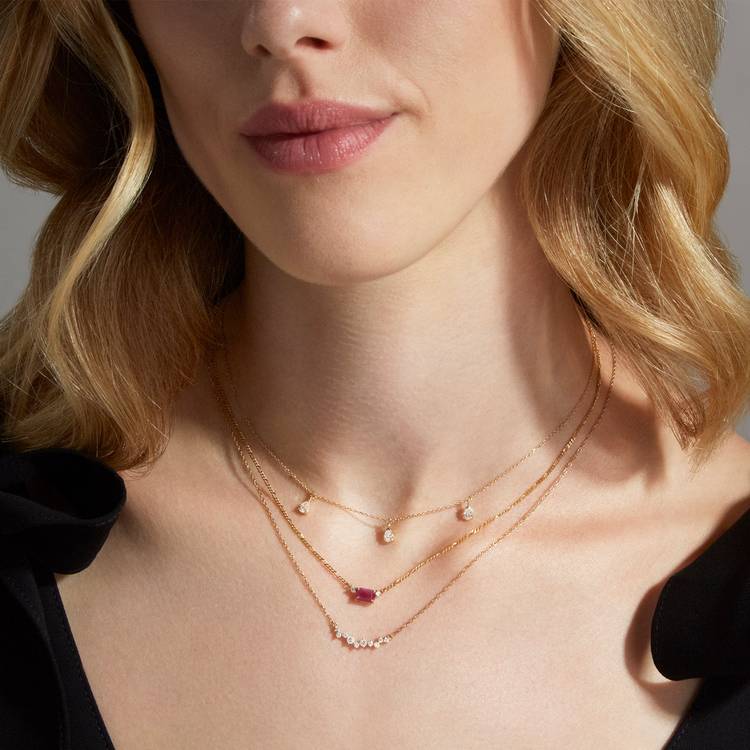Diamond Cuts: The Ultimate Guide
Diamonds are more than just sparkling gemstones; they are a symbol of love, luxury, and eternal beauty. But what gives these precious stones their mesmerizing sparkle? It’s all about the diamond cuts. In this comprehensive guide, we’ll delve into the world of diamond cuts, exploring the popular styles, factors influencing them, and how to choose the perfect one for your needs.
Introduction
What are diamond cuts? Diamond cuts refer to the intricate arrangement of facets on a diamond’s surface, which determines its brilliance, fire, and overall appearance. Essentially, the cut of a diamond directly impacts its ability to reflect light and dazzle admirers.
Importance of diamond cuts The cut of a diamond is arguably the most crucial factor in determining its beauty and value. Even a diamond with perfect color and clarity won’t sparkle to its fullest potential if it’s poorly cut. A well-cut diamond maximizes its brilliance, making it appear larger and more radiant.
Popular Diamond Cuts
- Round Brilliant Cut
- Princess Cut
- Emerald Cut
- Asscher Cut
- Radiant Cut
- Marquise Cut
- Pear Cut
- Oval Cut
- Heart Cut
- Cushion Cut
Each of these cuts has its unique characteristics, catering to different preferences and styles.
Factors Influencing Diamond Cuts
Diamond Shape: Different diamond shapes lend themselves better to certain cuts. For example, round diamonds are typically associated with the classic round brilliant cut, while elongated shapes like emerald and pear are often fashioned into step cuts.
Diamond Clarity: The clarity of a diamond, referring to the presence of internal flaws or inclusions, can impact the choice of cut. Inclusions near the surface may affect the diamond’s durability, influencing the recommended cut.
Diamond Color: Colorless diamonds are prized for their purity and brilliance, whereas colored diamonds, such as fancy yellows or pinks, may be cut differently to enhance their hue.
Diamond Carat Weight: The carat weight of a diamond can influence its proportions and overall appearance. Larger diamonds may require adjustments in cut to maintain optimal brilliance and symmetry.
The Anatomy of Diamond Cuts
Understanding the key elements that make up a diamond cut is essential for appreciating its beauty and evaluating its quality.
Facets: Facets are the flat, polished surfaces on a diamond that interact with light to produce sparkle and brilliance. The arrangement and proportions of these facets determine the diamond’s light performance.
Proportions: Proper proportions are critical for maximizing a diamond’s brilliance and fire. Factors such as table size, crown height, and pavilion depth must be carefully balanced to achieve optimal light reflection.
Symmetry: Symmetry refers to the precise alignment of a diamond’s facets. A well-cut diamond exhibits symmetrical patterns and even distribution of light, enhancing its visual appeal.
Polish: Polish refers to the smoothness and overall condition of a diamond’s surface. A high-quality polish ensures maximum light reflection and minimal distortion.
Diamond Cut Grading Systems
Two widely recognized organizations, the Gemological Institute of America (GIA) and the American Gem Society (AGS), offer comprehensive grading systems for evaluating diamond cuts.
GIA Cut Grading: The GIA evaluates diamond cuts based on factors such as brightness, fire, and scintillation, assigning grades ranging from Excellent to Poor.
AGS Cut Grading: The AGS employs a more detailed grading system, assessing factors like proportions, symmetry, and polish to determine the overall cut grade.
Choosing the Perfect Diamond Cut
When selecting a diamond cut, several factors should be taken into consideration to ensure it aligns with your preferences and budget.
Budget Considerations: Certain diamond cuts may be more expensive due to the skill and precision required in their craftsmanship. Understanding your budget constraints can help narrow down your options.
Personal Style Preferences: Your personal style and aesthetic preferences play a significant role in choosing the perfect diamond cut. Whether you prefer classic elegance or modern sophistication, there’s a cut that suits your unique taste.
Diamond Setting: The setting in which the diamond will be placed can influence the choice of cut. For example, certain cuts may complement specific ring designs or enhance the overall aesthetic appeal.
Occasion: Consider the occasion for which the man made diamonds will be worn. Whether it’s an engagement ring, anniversary gift, or everyday accessory, choosing the right cut ensures it’s perfectly suited to the occasion.
Caring for Different Diamond Cuts
Proper care and maintenance are essential for preserving the beauty and brilliance of your diamond cut.
Cleaning Tips: Regular cleaning with mild soap and warm water helps remove dirt and oils that can dull the diamond’s sparkle. Avoid using harsh chemicals or abrasive cleaners, as they can damage the stone.
Maintenance Tips: Periodic inspections by a professional jeweler can help identify any potential issues with your diamond cut, such as loose settings or chipped facets. Prompt repairs and maintenance ensure your diamond retains its luster for years to come.
Conclusion
In conclusion, diamond cuts are not merely about shaping a stone but sculpting its brilliance and beauty. Whether you’re drawn to the timeless elegance of a round brilliant cut or the modern allure of a princess cut, the perfect diamond cut reflects your unique style and personality. By understanding the factors influencing diamond cuts and evaluating your preferences, you can find the ideal stone that sparkles as brightly as your love.


